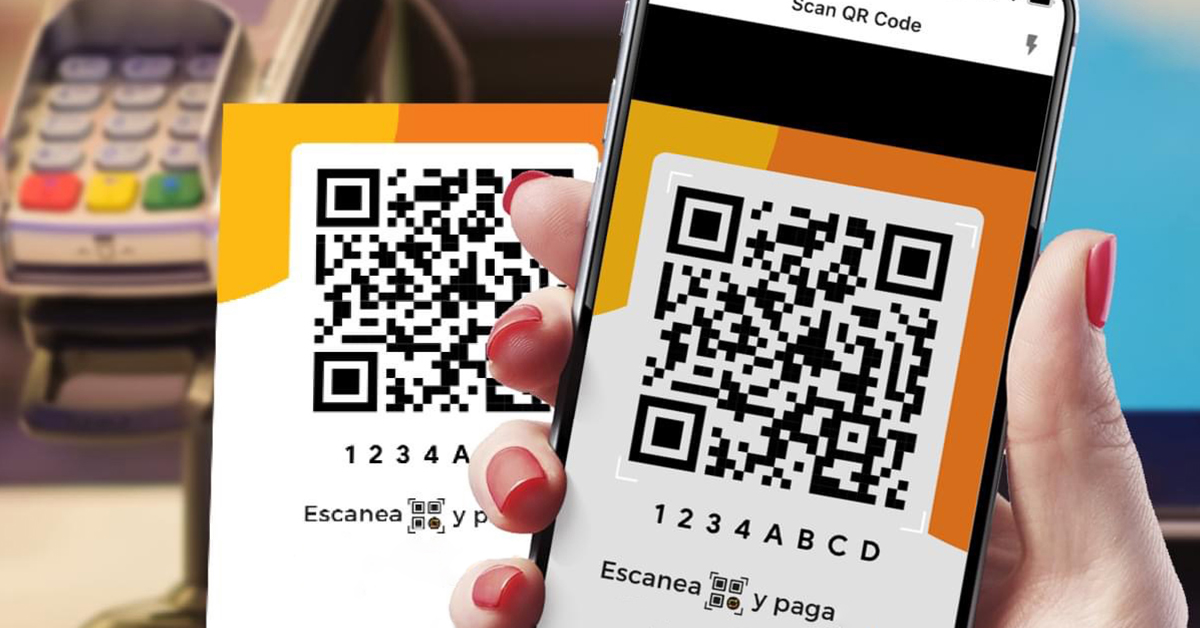Evertec® bets on easy and contactless payment tools
By: Gustavo Díaz Garratón
Evertec Digital Payment Solutions Manager.
Although QR (“quick response”) or quick response codes date back to the 1990s and were originally used in the automotive manufacturing industry, today they have become an important payment method globally with an accelerating boom. Their popularity, in large part, is due to the ease, accessibility and immediacy they offer to businesses and users during the payment process, in addition to satisfying the need for transactional tools called “contactless”, to avoid risks of contagion in the midst of an unusual global situation like the one that COVID-19 has led us to.
Basically, QR codes are an evolution of the traditional barcode. They are characterized by being a square composed of a matrix of small black squares on a white background and having in three of their corners markers in the form of larger squares that allow scanners to precisely detect the position of the information and how it should be read. Currently, the vast majority of smart mobile phones have a QR code scanner built into their camera, making this technology highly accessible. Furthermore, by storing data in two dimensions instead of one, these codes allow it to be read much faster and a lot of information to be stored in them.
QR codes can exist in two different forms: static and dynamic. Both allow information to be stored, but their difference lies in the fact that the former encode the information at the moment they are generated, which prevents it from being changed later, while the dynamic ones are modifiable after being generated. Each has its advantages depending on the industry and the purpose for which it is used. During the pandemic, we have seen how many industries and businesses have resorted to the use of QR codes and have adopted them as part of their operation to facilitate interaction with their customers, offer a better experience and above all be more hygienic and avoid physical contact. Some examples of these industries are the restaurant industry, where the code can be used to view the menu, place the order, and pay; in hospitality, where customers make reservations and check-in for restaurants, events and hotels; and that of retail, where QR codes are being used to reduce waiting in lines and to pay.
Among the main advantages of using QR codes for payments, the fact that there is no need to carry cash or physically use debit or credit cards stands out, the code is simply scanned with a smartphone using a mobile wallet or other application and the transaction is completed. This also allows paper usage to be reduced, as the proof of purchase is sent to the consumer digitally rather than printed. Additionally, these codes are very inexpensive and easy to create and maintain, making this technology highly accessible for businesses. These are some of the reasons that have motivated Evertec to implement and strengthen the use of QR codes among its allies.
In Puerto Rico, for example, Evertec included the use of QR codes in ATH Móvil®, the most important financial application in the country offered by more than 90 financial institutions and used by more than 1.5 million people, to make payments in an easy, safe and contactless way. In this case of success, static and dynamic QR codes are used to be able to attend to the different experiences that a consumer may face when paying. In merchants where the point of sale terminal is facing the consumer, a dynamic QR code is usually displayed on the terminal screen, whereas if the point of sale terminal is not facing the consumer or does not have the ability to present a QR code on the screen, static codes are used. Since the functionality was launched in June of last year, the adoption of this new way of paying has grown rapidly and has become an important and reliable option for merchants and users.
The COVID-19 situation forced us to accelerate the implementation of technologies like this in Puerto Rico and in other countries so that both consumers and merchants could have payment tools that could adapt to this new reality. Merchants have been able to ignore the risk of contagion in the payment process since they can easily and without any investment offer their customers a new, safe and hygienic way of paying. Likewise, consumers now have a contactless payment method available that allows them to make their purchases easily and using only their cell phone.
Contrary to what would be believed of QR codes, since it is a technology that has existed for several decades and considering the constant appearance of new technologies, especially in the payments industry, at Evertec we believe in its long permanence as a payment mechanism worldwide. In the same way, we are sure that while new payment technologies such as NFC (near-field communication) continue to become more accessible and with authentication mechanisms based on biometrics that ensure protection consumers’ privacy and are also more viable and universal, the way of paying will continue to evolve for the benefit of both merchants and consumers.


One Response
establish a QR code for the business